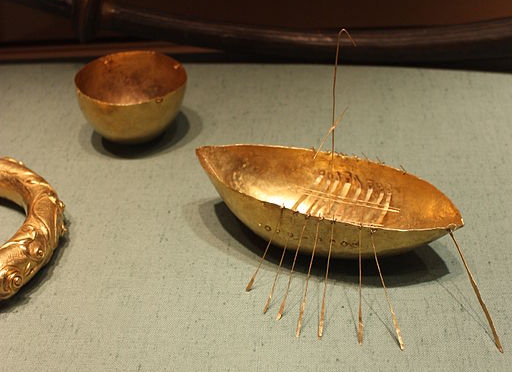Facts About Broighter Gold
The Broighter Gold, often referred to as the Broighter Hoard, is a captivating collection of gold artifacts from the Iron Age, dating back to the 1st century BC. This remarkable discovery was made in 1896 by two ploughmen, Tom Nicholl and James Morrow, on farmland near Limavady in Northern Ireland. The hoard includes a variety of stunning items such as a gold boat, a torc, a bowl, and various pieces of jewelry. Today, these treasures are housed in the National Museum of Ireland, which proudly describes the torc as the "finest example of Irish La Tène goldworking."
The discovery happened quite by accident as the ploughmen were working the fields near Lough Foyle. Initially mistaking the items for mud, they soon realized they had unearthed something far more valuable. The artifacts, including a miniature ship with detailed features like rowlocks and oars, were sold to the British Museum. The intricacy of the boat suggests it was likely a votive offering to the Celtic sea god Manannán mac Lir.
Ownership of the hoard sparked a significant dispute between the British Museum and the Royal Irish Academy. The debate centered on whether these items were ancient religious gifts. The court eventually sided with the British Museum, resulting in the hoard being forfeited to the crown and subsequently transferred to the National Museum of Ireland in Dublin.
The Broighter Gold hoard is renowned for its unique and varied gold artifacts, which highlight the exceptional craftsmanship and design of the La Tène period. The torc, in particular, stands out as a masterpiece of Irish goldworking. The eclectic styles found within the hoard are comparable to other notable ancient finds, such as the Stirling Hoard from Scotland. These artifacts have even been featured on commemorative coins and postage stamps, emphasizing their cultural and historical significance.

 United Kingdom
United Kingdom